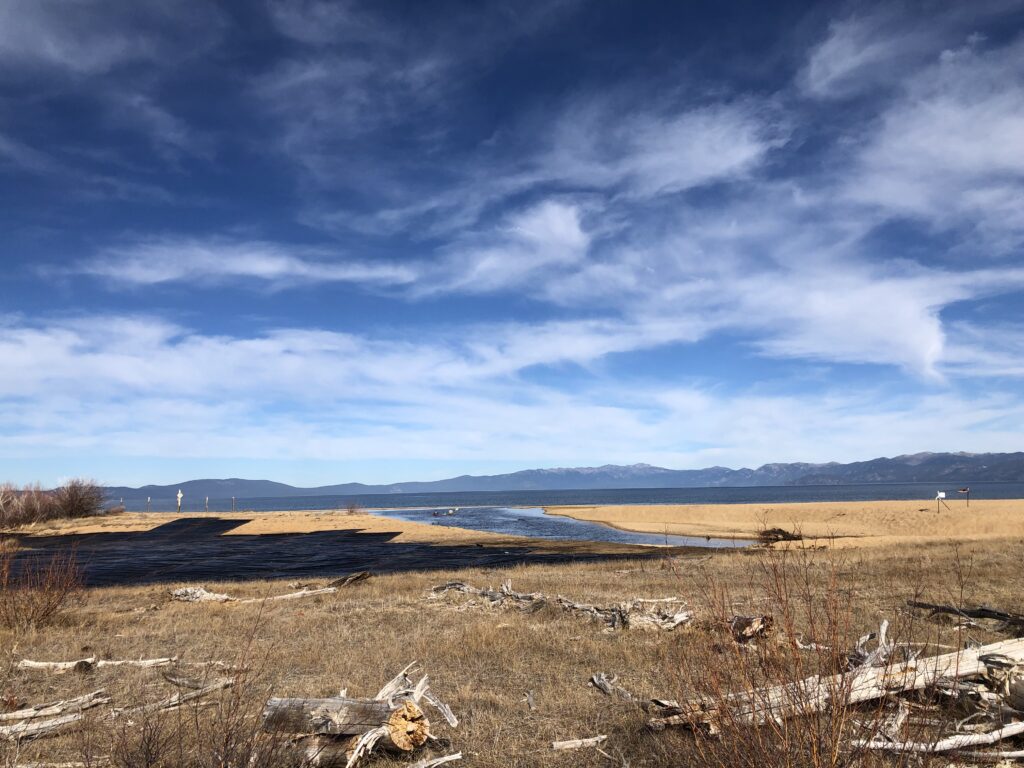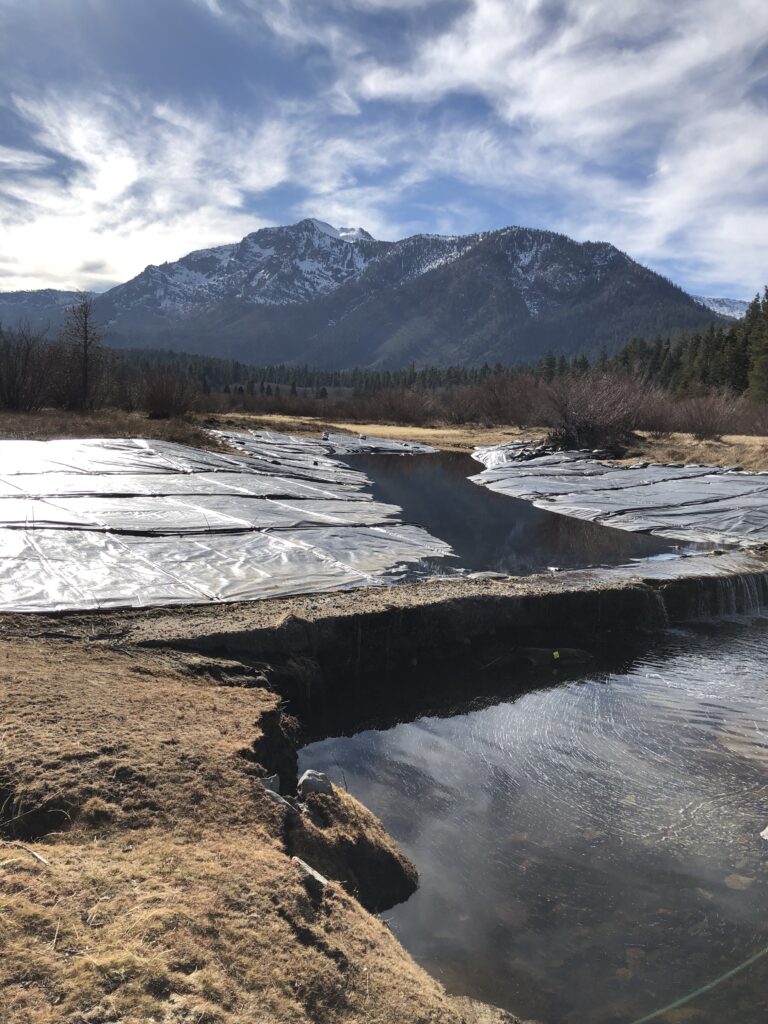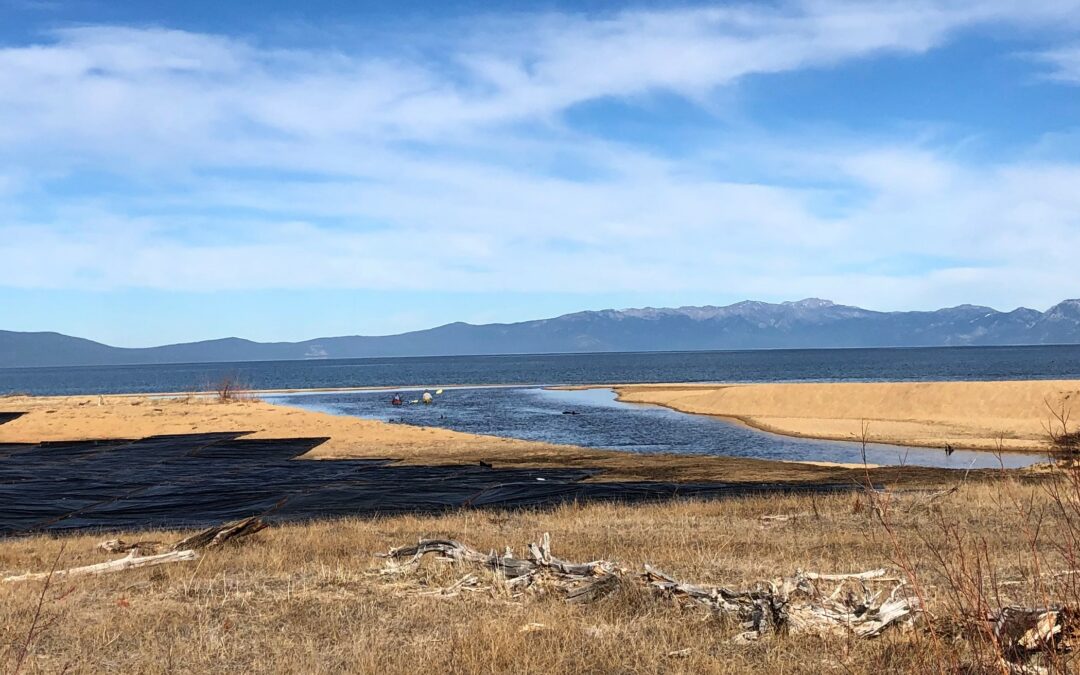INTERAGENCY NEWS RELEASE
Contact: Victoria Ortiz, 775-589-5251 or Lisa Herron, 530-721-3898
For Immediate Release September 6, 2023
Invasive Plant Barrier Installation Complete at Popular South Shore Marsh
Public reminded to stay out of fenced areas
SOUTH LAKE TAHOE, Calif. – Agencies restoring the Taylor and Tallac marsh areas have completed the installation of bottom barriers to remove 17 acres of invasive plants as part of the comprehensive restoration of one of the last natural wetlands in the Lake Tahoe Basin, the USDA Forest Service Lake Tahoe Basin Management Unit (LTBMU) and Tahoe Regional Planning Agency (TRPA) announced today. The collaborative project that began in December 2021 is one of the largest aquatic invasive species control projects ever undertaken in the Tahoe Basin.
“We’ve appreciated the public’s patience and cooperation as our contractors have been installing the barriers the last couple of years,” said Sarah Muskopf, aquatic biologist with the LTBMU. “Unfortunately, these marshes are infested with aquatic invasive species that threaten the ecosystem, and installing these barriers is a critical first step in restoring the area.”
Crews have staked large tarps known as bottom barriers to the bottom of the marsh to starve invasive weeds such as Eurasian watermilfoil of sunlight. Bottom barriers are commonly used in the Tahoe Basin to control infestations. Laying the barriers followed significant prep work by agency staff and volunteers from the local youth group Generation Green and Blue Waters Exchange, a Forest Service program that brings young adults from California and Hawaii together to explore cultural and natural resource issues facing both states.
The tarps are expected to remain in place through 2026. Crews will be monitoring the area throughout the treatment to ensure the barriers remain in place.
The agencies say residents and visitors have a crucial role in the restoration as well. Success of the project requires staying away from bottom barriers and out of fenced areas. Ensuring boats, paddle craft, and water toys brought to Tahoe are Clean, Drained, and Dry will further reduce the threat of new invasive species. The public is also asked to share official information about the project with others and to send any questions to the project team by visiting https://eip.laketahoeinfo.org/Project/FactSheet/01.02.01.0034.
“This high-priority Environmental Improvement Program (EIP) project focuses on restoring ecological processes and functions while maintaining and enhancing existing recreational facilities and infrastructure,” said Dr. Kathleen McIntyre, TRPA’s EIP Department Manager. “It will provide improved habitat and restored ecosystem function while maintaining public access to a beloved area on the South Shore.”
Controlling invasive plants is the first phase in the larger, comprehensive Taylor and Tallac Creeks Restoration Project, according to the agencies. This multi-million-dollar project is part of the Lake Tahoe Environmental Improvement Program and is funded through the Lake Tahoe Restoration Act, USDA Forest Service, Bipartisan Infrastructure Law, U.S. Army Corps of Engineers, Southern Nevada Public Land Management Act, as well as $100,000 in private contributions from the Tahoe Fund.
Learn more about the project at https://eip.laketahoeinfo.org/Project/FactSheet/01.02.01.0034.

Photo Caption: Agencies restoring the Taylor and Tallac marsh areas have completed the installation of bottom barriers to remove 17 acres of invasive plants as part of the comprehensive restoration of one of the last natural wetlands in the Lake Tahoe Basin. Photo credit: Lisa Herron, USDA Forest Service LTBMU

Photo Caption: The bottom barriers to remove invasive plants are expected to remain in place through 2026. Crews will be monitoring the area throughout the treatment to ensure the barriers remain in place. Photo credit: Lisa Herron, USDA Forest Service LTBMU

